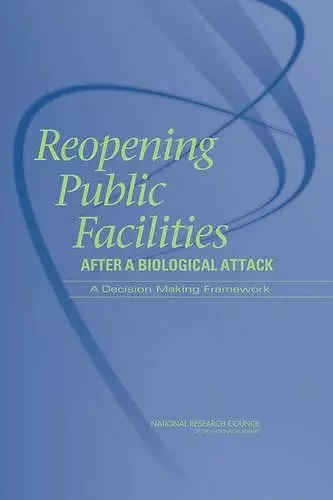Reopening Public Facilities After a Biological Attack
A Decision-Making Framework
National Research Council author National Academy of Sciences author Division on Earth and Life Studies author Board on Life Sciences author Committee on Standards and Policies for Decontaminating Public Facilities Affected by Exposure to Harmful Biological Agents: How Clean is Safe? author
Format:Paperback
Publisher:National Academies Press
Published:18th Aug '05
Currently unavailable, our supplier has not provided us a restock date

The anthrax attacks in fall 2001 spurred an extensive and costly decontamination effort where many decisions had to be made about which sites required cleanup, what method to use, how to determine the effectiveness of the cleanup, and how "clean" the building had to be for reoccupation. As part of a project funded by the U.S. Department of Homeland Security (DHS), and managed by Lawrence Livermore National Laboratory, the National Research Council was asked to consider the criteria that must be met for a cleanup to be declared successful, allowing the reoccupation of a facility. The report finds that efficiently sampling and characterizing a pathogen is critical for choosing the best remediation strategy. However, there should be no universal standard for deciding when a building is safe to re-enter because varying pathogen amounts and characteristics could require different strategies. The report offers a flowchart for decision-makers that includes questions about the characteristics of the pathogen; how far it has spread; whether it is transmissible between humans; and how long it will survive to pose a threat. The report also recommends that a risk-assessment approach be adopted as part of a strategy for achieving a "socially acceptable" standard for cleanup.
ISBN: 9780309096614
Dimensions: unknown
Weight: unknown
224 pages